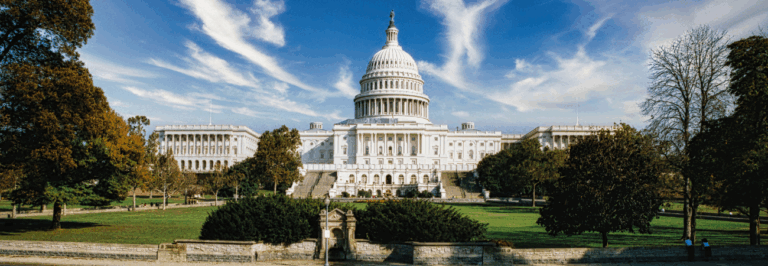
By Ben Walker, Vice President, Renewable Energy
In June, lawmakers in D.C. started to finalize the Budget Reconciliation Bill for 2025. This bill, alternatively called the One Big Beautiful Bill Act or H.R. 1, underwent a lot of negotiations, both within and between the two houses of Congress until it was passed and signed into law on July 4, 2025. At over 800 pages, the bill made large changes in multiple programs. At a high level, this bill creates approximately $5T in new spending (predominantly via tax cuts) and offsets less than half of that (approximately $2T) via spending cuts (primarily to health care and renewable energy).
There were multiple iterations of renewable energy cuts, and while the final version avoids the most draconian of the proposed language options, it still contained plenty of big changes – most notably to the Investment Tax Credit.
Investment Tax Credit
The Investment Tax Credit (ITC) has been around for decades. What started as a 10% credit in 1978 and was pushed to a 30% credit via the Energy Policy Act of 2005. This credit had bipartisan support through the remaining years and was amended in the Inflation Reduction Act of 2022. (Of note – just like this recent bill, the Inflation Reduction Act was also a Budget Reconciliation process. This process provides lower hurdles for a gridlocked Congress to overcome, but it generally makes laws less permanent in nature.) Perhaps in part due to the visibility of the previous Budget Reconciliation bill (the IRA), this recently passed Budget Reconciliation bill (the OBBBA) took aim to eliminate the ITC entirely for wind and solar projects; but notably, the ITC was retained for battery projects.
The impact of the ITC elimination is that projects will see an effective 30% increase in costs, but the timing of that is still uncertain. Initial interpretations were that Residential projects must be completed in 2025 to receive the credit; and Commercial projects must either have a) construction started by July 4, 2026 or b) construction completed by December 31, 2027 to receive the credit. Traditionally, Commercial projects benefit from a “safe harbor” process, where projects would be eligible for credits under the first option provided they had passed certain initial milestones by that time: either having started construction or incurring 5% of project costs. Thus, for a few days at least, expectations were that projects had one year to achieve safe harboring.
Safe Harbor Threatened
On July 7, three days after the new bill was passed, the President signed an executive order asking for new guidance from the Treasury for tightening the standards used for safe harboring. The Treasury has 45 days, until the second week of August, to respond. How they do so is something that will be closely watched around the industry.
Impact to the Market
While the timing of the ITC going away is still a bit uncertain, the credits will disappear at some point. It’s worth noting that these credits may come back in future Budget Reconciliation processes, but until that happens, the financial performance of projects will be reduced. How it impacts the projects will depend a bit on the size:
- On-Site: The loss of the ITC will be felt most poignantly for on-site projects. Many on-site projects already faced tight margins – this loss may be the difference between projects being cost effective or not.
- Community Solar: Developers have been working diligently to safe harbor projects in the last few months. We anticipate it taking 18-24 months for the market to work through this project queue, after which, project availability may dry up. Note, in some states, other technology (battery storage, hydro, etc.) are also eligible for the same “community solar” programs, and so we may see some technology switching for these.
- Utility Scale: While the loss of the ITC (and it’s sibling, the Production Tax Credit) will be painful for large projects, these projects will remain cost-competitive.
Wholesale Energy Markets
Wind and solar are some of the cheapest power sources we have. Additionally, they are some of the fastest to construct technologies. Taken together, this means that ~90% of recent grid additions have been renewable technologies.
From 1880-2005, the US largely experienced a steady increase in energy demand as our economy grew. But over the last few decades, energy demand has levelled off. Recently, forecasts have called for sharp increases in demand, led primarily by Data Centers (and, to a smaller extent, Electric Vehicles). If demand does increase, we will need to build more electricity generation to keep up – and we need to do so quickly. (And not just build it, but allow for permitting as well – the filled-to-bursting Interconnection Queue is another pertinent issue on this topic.)
Given that we haven’t had to build much generation in recent decades, it’s quite possible adapting to demand growth will be a challenge, and the US will be slow to respond. It seems likely that energy prices will increase in the coming years. One option for energy buyers is to hedge (or lock in) portions of their energy spend – either via traditional financial vehicles (like procurement contracts) or Power Purchase Agreements directly with specific assets.
Sustainability Impact
For those with sustainability goals, the passing of the OBBBA may lead to a changing focus. Many other incentives, especially around electrification or decarbonization, are also being rescinded – this can hinder efforts to reduce Scope 1 emissions. And the ITC element addressed above will certainly impact those trying to reduce Scope 2 emissions. Thus, we anticipate increased scrutiny and attention being paid to Scope 3 emissions (supply chain) in coming years.
Actions To Take:
- Small scale projects (<50MW) should seek to act fast. (This includes on-site and community solar.)
- On-site battery projects may become the new focus in the coming years.
- Explore a PPA and/or hedge to absorb potential energy price shocks.
- Review your sustainability goals and objectives.
Environ Energy Advisors are available to discuss these changes with you and collaborate on how to adapt your business to remain competitive in this changing environment.



